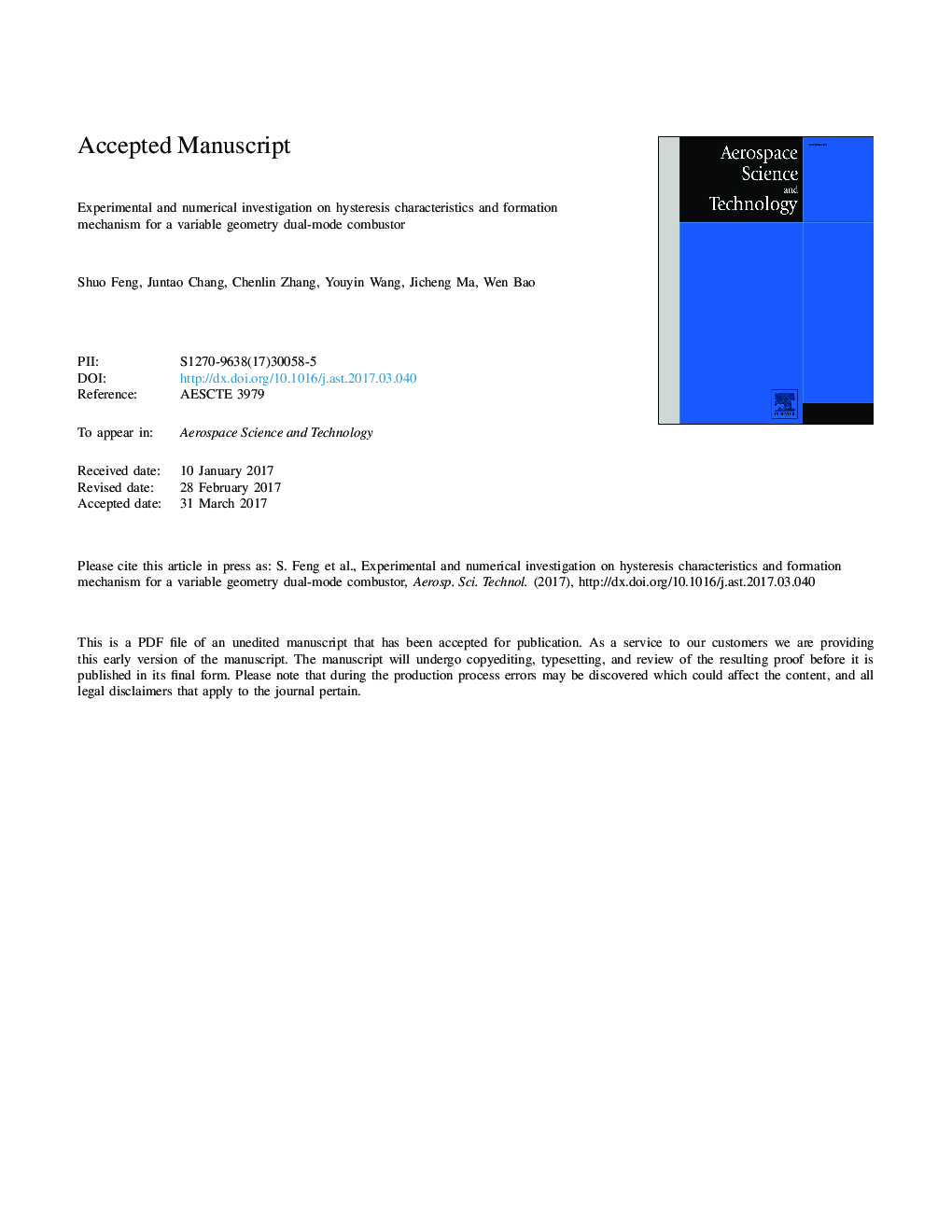| Article ID | Journal | Published Year | Pages | File Type |
|---|---|---|---|---|
| 5472792 | Aerospace Science and Technology | 2017 | 30 Pages |
Abstract
As part of our efforts to study the hysteresis characteristic and formation mechanism for a variable geometry dual mode combustor, a series of geometry path continuous adjustment experiments and numerical simulation were conducted in the variable geometry dual mode combustor with a Mach number of 3, a divergent ratio ranging from 1.6 to 2.54 and a fuel equivalence ratio ranging from 0.6 to 1.0. Experimental results indicated that the wall static pressure of feature points had an obvious hysteresis phenomenon with the geometry path continuous variation. For given feature points, the hysteresis becomes much smaller with the increasing of the divergent ratio. The interaction between the oblique shock train motion and combustion heat release distribution was adequately considered to explicate the mechanism of the hysteresis formation. It was found that the hysteresis phenomenon was produced from the unstable positive feedback effect of the oblique shock train motion in the isolator. Moreover, the effect of the hysteresis on the total pressure loss, irreversible entropy loss and combustion performance were investigated numerically and experimentally. It was therefore strongly believed that the study of the hysteresis characteristic and formation mechanism on the combustion performance could be very significant to improve combustion performance for the variable geometry dual mode combustor, especially for a wide range of flight Mach numbers.
Keywords
Related Topics
Physical Sciences and Engineering
Engineering
Aerospace Engineering
Authors
Shuo Feng, Juntao Chang, Chenlin Zhang, Youyin Wang, Jicheng Ma, Wen Bao,
